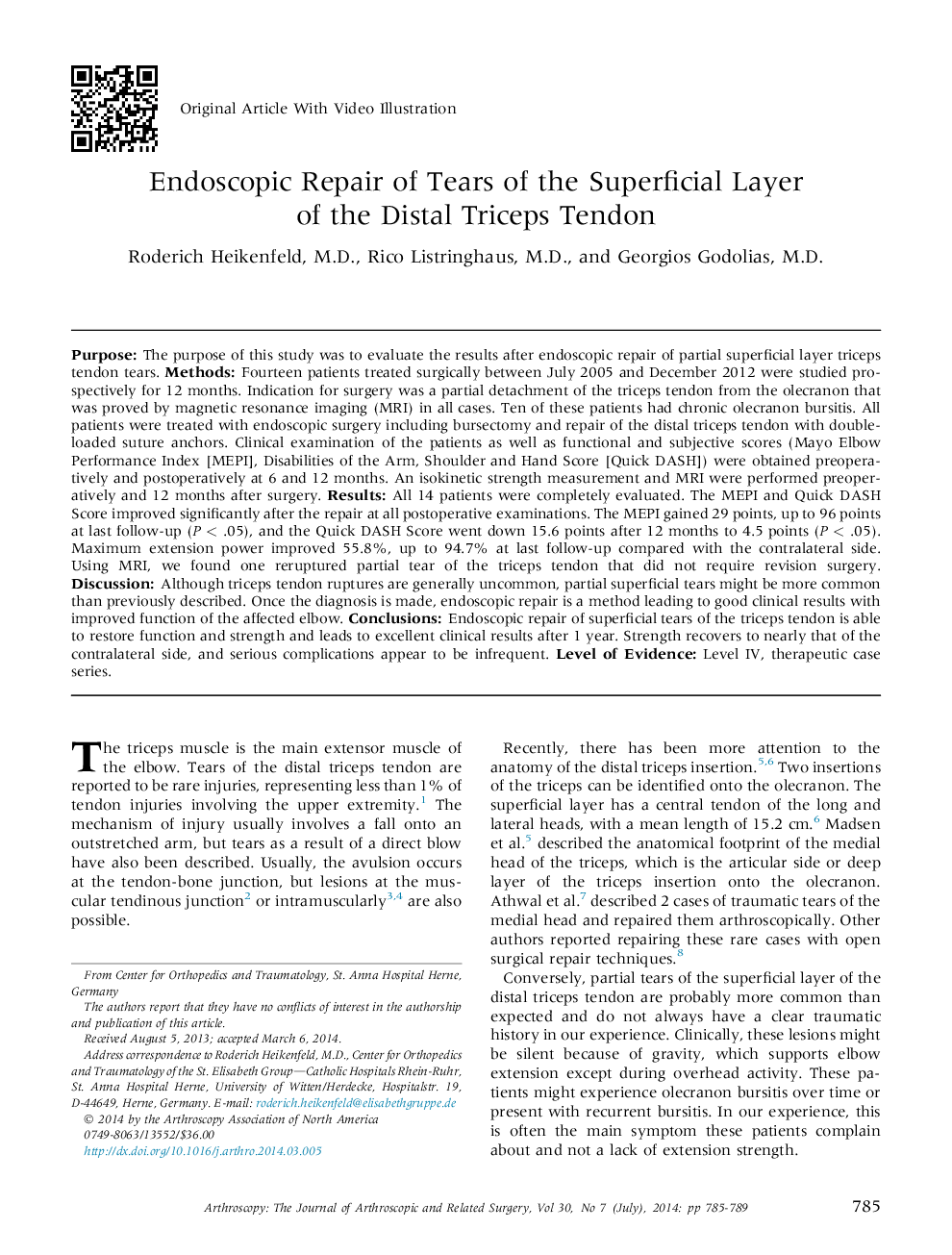| کد مقاله | کد نشریه | سال انتشار | مقاله انگلیسی | نسخه تمام متن |
|---|---|---|---|---|
| 4043201 | 1603494 | 2014 | 5 صفحه PDF | دانلود رایگان |

PurposeThe purpose of this study was to evaluate the results after endoscopic repair of partial superficial layer triceps tendon tears.MethodsFourteen patients treated surgically between July 2005 and December 2012 were studied prospectively for 12 months. Indication for surgery was a partial detachment of the triceps tendon from the olecranon that was proved by magnetic resonance imaging (MRI) in all cases. Ten of these patients had chronic olecranon bursitis. All patients were treated with endoscopic surgery including bursectomy and repair of the distal triceps tendon with double-loaded suture anchors. Clinical examination of the patients as well as functional and subjective scores (Mayo Elbow Performance Index [MEPI], Disabilities of the Arm, Shoulder and Hand Score [Quick DASH]) were obtained preoperatively and postoperatively at 6 and 12 months. An isokinetic strength measurement and MRI were performed preoperatively and 12 months after surgery.ResultsAll 14 patients were completely evaluated. The MEPI and Quick DASH Score improved significantly after the repair at all postoperative examinations. The MEPI gained 29 points, up to 96 points at last follow-up (P < .05), and the Quick DASH Score went down 15.6 points after 12 months to 4.5 points (P < .05). Maximum extension power improved 55.8%, up to 94.7% at last follow-up compared with the contralateral side. Using MRI, we found one reruptured partial tear of the triceps tendon that did not require revision surgery.DiscussionAlthough triceps tendon ruptures are generally uncommon, partial superficial tears might be more common than previously described. Once the diagnosis is made, endoscopic repair is a method leading to good clinical results with improved function of the affected elbow.ConclusionsEndoscopic repair of superficial tears of the triceps tendon is able to restore function and strength and leads to excellent clinical results after 1 year. Strength recovers to nearly that of the contralateral side, and serious complications appear to be infrequent.Level of EvidenceLevel IV, therapeutic case series.
Journal: Arthroscopy: The Journal of Arthroscopic & Related Surgery - Volume 30, Issue 7, July 2014, Pages 785–789